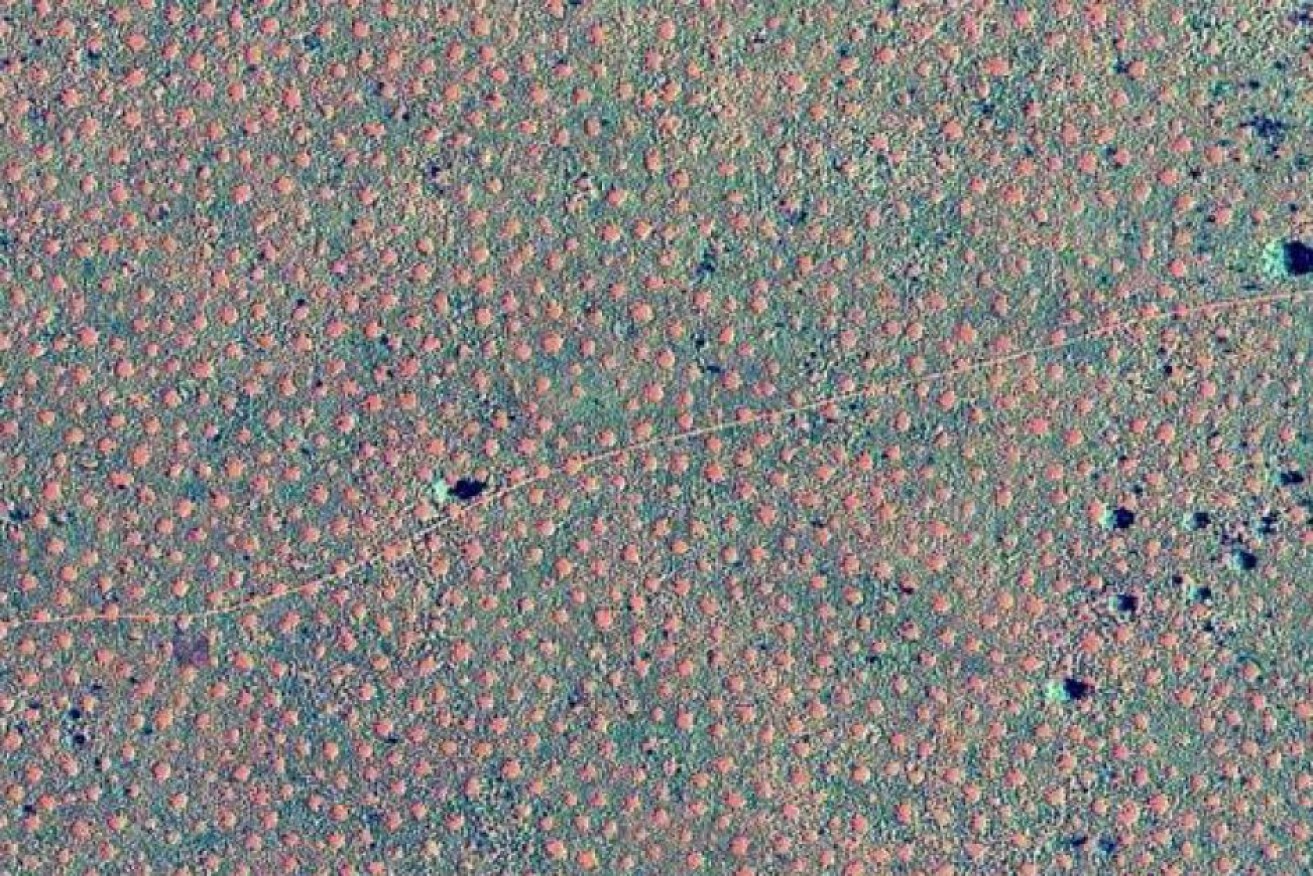Rare ‘fairy circles’ found in Australian outback

Bronwyn Bell/ABC
The chance discovery of ‘fairy circles’ in Western Australia’s Pilbara region is providing new insight into one of nature’s enduring puzzles.
The circles, which are regularly spaced patches of bare soil that form in uniform hexagonal patterns throughout arid grasslands, had until recently only been confirmed in Namibia in south-western Africa.
But in 2014, fairy circle expert Dr Stephan Getzin from the Helmholtz Centre for Environmental Research was alerted to the presence of similar rings in vegetation 15 kilometres to the east to south-east of Newman in the Pilbara by Australian environmental scientist and study co-author, Dr Bronwyn Bell.
• Earth sets terrifying new temperature record
• Russia’s military dolphins and other animals with important jobs
• Giant snails among weird animals in the mail
Many theories have been raised over the years about how the mysterious patterns form in arid areas, but the latest research has indicated plants were organising themselves according to the scarce water availability.
Dr Todd Erickson, from the Restoration Seed Bank Initiative at the University of Western Australia, said the strange pattern was very visible when flying into the small mining town.
When viewed from above, groups of fairy circles form repeating hexagonal shapes, with six bare patches about four metres in diameter spaced about 10 metres away from each other around a central focal point to form the points of the hexagon.
“You don’t see them from the ground,” said Dr Erickson, another study author who has been working in the Pilbara for the last eight years.
“You can be standing inside a fairy circle and not see the next one 10 metres away; to find them, you need to spot them from the air.
“People have known about [the circles] for years but no-one with the skills of Stephan have actually gone out there and actually mapped them from the landscape scale.”
Analysis of aerial photographs and spatial patterns of vegetation by the team, published in the Proceedings of the National Academy of Sciences, revealed Australian and African fairy circles are almost identical, despite being more than 10,000 kilometres apart.
Patches support plant response to water
There are a number of hypotheses about how these enigmatic patterns in arid areas may have formed.
One hypothesis is that ants or insects nibbled away at the plants’ roots.
Another hypothesis suggests the circles are caused by underground bubbles of carbon monoxide rising to the surface.
But researchers said the latest study indicated the fairy circles in the Pilbara were formed by plants organising themselves in response to scarce water resources.

Australian ‘fairy circles’ are mostly around four to seven metres in diameter. Photo: Stephan Getzin/ABC
An analysis of the temperature and permeability of the soil indicated that water flowed across the hard-baked patches of soil to where spinifex grasses grew at the edge.
“Our soil analysis revealed that there are strong infiltration contrasts between vegetation areas and bare soil gaps [with hard soil crusts],” Dr Getzin said.
The vegetation kept the surface cooler and soil looser at the edge of the circle, so water could permeate further and more plants could colonise the area.
Spatial mapping of the area by Dr Getzin and his team ruled out insect activity.
Unlike Namibia, where a number of species of insects are found in fairy circles, the majority of fairy circles in the Pilbara did not have any ant nests or termite mounds. Any nests and mounds they did find were randomly distributed.
“That rules out ant or insect activity as the driving pattern, because the ant hills and termite mounds are irregular while fairy circles are extremely regular,” Dr Erickson said.
Dr Getzin said the results supported current thinking in dryland ecological research.
“Ecologists are increasingly realising that distinct vegetation patterns are a population-level consequence of competition for scarce water,” he said.
Australian outback an ideal place for discoveries

The fairy circles of Australia are, as in Namibia, characterised by their regular small-scale spacing and large-scale pattern. Photo: Kevin Sanders/ABC
Dr Getzin said it was exciting to discover a new and mysterious natural phenomena, like fairy circles.
“Today, scientists mostly find very small animals such as a new insect or amphibian species in the rainforest, cryptic deep-sea animals, or new galaxies in outer space,” he said.
“Discoveries like the Australian fairy circles are extremely rare, which makes the current study tremendously exciting.”
Dr Getzin added the area around Newman seemed to be an ideal place for such finds.
“Just 35 kilometres north of Newman a previously unknown meteorite crater (the Hickman crater) was identified using Google Earth in 2007,” he said.
“This illustrates the great potential of the remote Australian outback for new discoveries.”
-ABC









